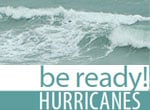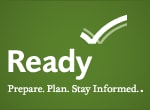Use Safe Water After a Natural Disaster or Emergency

If you are in a disaster or emergency, it’s important that you take steps to prevent illness from unsafe water.
After a disaster
- Do not use water you suspect or have been told is contaminated to drink, wash dishes, brush your teeth, wash and prepare food, wash your hands, make ice, or make baby formula.
- Use bottled, boiled, or treated water for drinking, cooking, and personal hygiene.
- Follow your state, local, or tribal health department for specific recommendations regarding boiling or treating water in your area.
- Avoid drinking alcohol. Alcohol dehydrates the body, which increases the need for drinking water.
Never use water from unsafe sources.
Do not use water you suspect or have been told is unsafe to
- Wash dishes
- Brush teeth
- Wash and prepare food
- Make ice
- Make baby formula
After an emergency, especially after flooding, drinking water may not be available or safe to drink. Never use water from radiators or boilers that are part of your home heating system.
Do not use contaminated well water.
Floods and other disasters can damage drinking water wells and lead to aquifer and well contamination. Floodwater can contaminate well water with livestock waste, human sewage, chemicals, and other contaminants that can lead to illness when used for drinking, bathing, and other hygiene activities. Dug wells, bored wells, and other wells less than 50 feet deep are more likely to be contaminated, even if damage is not apparent.
It is safest to drink bottled water until you are certain your water is free of contaminants and safe to drink.
- If your water comes from a private well that has been flooded, consider the following guidance for making water safe and for emergency water sources until you are certain your water is free of contaminants and safe to drink.
- If extensive flooding has occurred or you suspect a well may be contaminated, DO NOT drink the water. Use a safe water supply like bottled or treated water.
- Contact your local, state, or tribal health department for specific advice on wells and testing.
For more information: Disinfecting Wells After a Disaster
Make your water safe to use.
Water often can be made safe to drink by boiling, adding disinfectants, or filtering.
Boil water
alert iconIMPORTANT
Water contaminated with fuel or toxic chemicals , or radioactive material will not be made safe by boiling or disinfection. Use a different source of water if you know or suspect that water might be contaminated with fuel or toxic chemicals.
If you suspect your water is contaminated with fuel or chemicals, contact your local health department for specific advice.
If you don’t have safe bottled water, you should boil water to make it safe. Boiling is the surest method to make water safer to drink by killing disease-causing organisms, including viruses, bacteria, and parasites.
You can improve the flat taste of boiled water by
- Pouring it from one clean, disinfected container to another and then allowing it to stand for a few hours OR
- Adding a pinch of salt for each quart or liter of boiled water
Steps for boiling cloudy water
- Filter it through a clean cloth, paper towel, or coffee filter, OR allow it to settle.
- Draw off the clear water.
- Bring the clear water to a rolling boil for 1 minute (at elevations above 6,500 feet, boil for 3 minutes).
- Let the boiled water cool.
- Store the boiled water in clean, sanitized containers with tight covers.
Steps for boiling clear water
- Bring the clear water to a rolling boil for 1 minute (at elevations above 6,500 feet, boil for 3 minutes).
- Let the boiled water cool.
- Store the boiled water in clean, sanitized containers with tight covers.
Disinfectants
If you don’t have clean, safe, bottled water and if boiling is not possible, you often can make water safer to drink by using a disinfectant, such as unscented household chlorine bleach, iodine, or chlorine dioxide tablets. These can kill most harmful organisms, such as viruses and bacteria. However, only chlorine dioxide tablets are effective in controlling more resistant organisms, such as the parasite Cryptosporidium. If the water is contaminated with a chemical, adding a disinfectant will not make it safe to drink.
To disinfect water using bleach:
Bleach comes in different concentrations. Make sure you know the concentration of bleach you are using before using to disinfect drinking water. It should be on the label. Typically, unscented household liquid chlorine bleach in the United States will be between 5% and 9% sodium hypochlorite, though concentrations can be different in other countries.
If your water is cloudy, filter water through a clean cloth, paper towel, or coffee filter, OR allow it to settle, then draw off the clear water and follow the steps below.
If your water is clear,
- Follow the instructions on the bleach label for disinfecting drinking water.
- If the necessary instructions are not given, add a little less than 1/8 teaspoon (8 drops or about 0.5 milliliters) bleach for each gallon of clear water (or 2 drops of bleach for each liter or each quart of clear water).
- Stir the mixture well.
- Let it stand for at least 30 minutes before using.
- Store the disinfected water in clean, sanitized containers with tight covers.
To disinfect water to control for resistant organisms using chlorine dioxide tablets:
- Follow the manufacturer’s instructions.
- Store the disinfected water in clean, sanitized containers with tight covers.
Filters
Many portable water filters can remove disease-causing parasites such as Cryptosporidium and Giardia from drinking water.
- If you are choosing a portable water filter, try to pick one that has a filter pore size small enough to remove both bacteria and parasites (absolute pore size of 1 micron or less). Most portable water filters do not remove bacteria or viruses.
- Carefully read and follow the manufacturer’s instructions for the water filter. After filtering, add a disinfectant such as iodine, chlorine, or chlorine dioxide to the filtered water to kill any viruses and remaining bacteria. For more information about water filters, see the Choosing Home Water Filters and Other Water Treatment Systems page.
Water treatment resources
To learn more about water filters and treatments that can remove organisms such as viruses, bacteria, and parasites (such as Cryptosporidium), see the following resources:
- Making Water Safe in an Emergency
- A Guide to Water Filters
- A Guide to Drinking Water Treatment and Sanitation for Backcountry and Travel Use
Information on the effectiveness of various water treatment methods - A Guide to Commercially Bottled Water and Other Beverages
- Emergency Disinfection of Drinking Waterexternal icon
Know where to find safe emergency water sources.
Alternative sources of clean water can be found inside and outside the home. DO NOT DRINK water that has an unusual odor or color, or that you know or suspect might be contaminated with fuel or toxic chemicals; use a different source of water.
Possible home water sources:
- Water from your home’s water heater tank (part of your drinking water system, not your home heating system)
- Melted ice cubes made with water that was not contaminated
- Water from your home’s toilet tank (not from the bowl), if it is clear and has not been chemically treated with toilet cleaners such as those that change the color of the water
- Liquid from canned fruit and vegetables
- Water from swimming pools and spas that hasn’t been contaminated with floodwater or stormwater can be used for personal hygiene, cleaning, and related uses. Do not drink water from swimming pools or spas.
Listen to reports from local officials for advice on water precautions in your home.
Possible water sources outside the home:
Floodwater can contaminate well water and rivers, streams, and lakes with livestock waste, human sewage, chemicals, and other contaminants that can lead to illness when used for drinking, bathing, and other hygiene activities.
Water from sources outside the home must be treated through boiling, adding disinfectants, or using filters, because it could be contaminated with livestock waste or human sewage. If you suspect or know the water is contaminated with toxic chemicals or fuels, it cannot be made safe. You should not drink or bathe in this water.
Possible sources of water that could be made safe by treatment include
- Rainwater
- Streams, rivers, and other moving bodies of water
- Ponds and lakes
- Natural springs
Note: DO NOT USE water that has been contaminated by fuel or toxic chemicals.
- Water-related Emergencies and Outbreaks
CDC’s website dedicated to water needs before, during, and after disasters or emergencies - Drinking Water Wells
Make sure your well water is safe - Personal Hygiene and Handwashing After a Disaster or Emergency
Tips to help protect yourself from illness and disease - Educational Materials
Easy-to-use posters, flyers, stickers, and PSAs with tips and information - Cleaning and Sanitizing With Bleach After an Emergency
Information on how to keep surfaces clean to avoid the spread of germs - Guidelines for the Management of Acute Diarrhea After a Disaster
Acute diarrhea may occur in post-disaster situations where access to electricity, clean water, and sanitary facilities is limited


